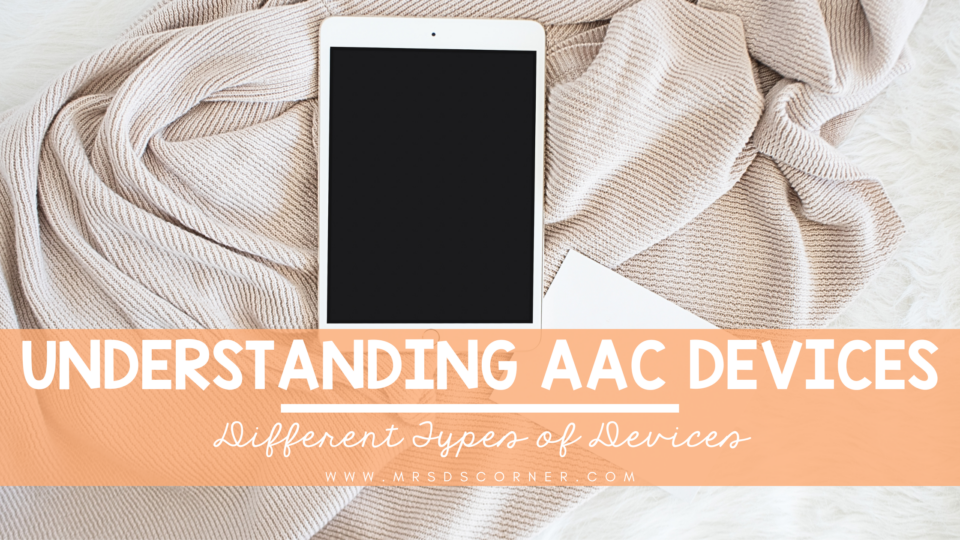Augmentative and Alternative Communication (AAC) devices are tools designed to help individuals who struggle with verbal communication express themselves effectively. These devices can be essential for people with conditions such as cerebral palsy, autism, or speech disorders.


AAC devices come in various forms, ranging from simple picture boards to high-tech speech-generating devices. The type of AAC device an individual uses really depends on their needs. Not all individuals need or are able to use the same type of devices, and that’s okay.
Why AAC Devices are Needed
AAC devices are needed when an individual faces challenges in spoken communication. These challenges might arise from physical disabilities, cognitive impairments, or medical conditions that affect speech production. By using AAC devices, individuals can convey their thoughts, needs, and emotions, enhancing their ability to interact with others and participate more fully in various settings.
These tools open up a world of communication to those who cannot participate in a traditional manner. They enhance life and can give an individual a voice that has been silent for far too long.
This article contains affiliate links to products that might help you when teaching.
Main Categories of AAC Devices
There are two main categories of AAC devices: aided and unaided. Both have their place in the world of communication assistance and both can be incredibly beneficial for those who need help communicating.
Unaided AAC Devices
Unaided AAC devices do not require external equipment and rely solely on the user’s body to communicate. Examples of unaided AAC devices include signs, vocalization, facial expressions, and gestures.
Unaided AAC devices are beneficial for individuals who have the physical capability to use gestures or signs effectively to bridge that communication gap.
It’s important to note that American Sign Language (ASL) is not considered an AAC because it is a complete language on its own.
“The American Speech-Language-Hearing Association (ASHA) defines Augmentative and Alternative Communication (AAC) as all of the ways that someone communicates besides signing/talking. Everybody has a right to communication and AAC may assist individuals who are unable to communicate fluently with American Sign Language (ASL) or spoken language.”
Augmentative and Alternative Communication, Indiana Department of Health, August 2022, https://www.in.gov/health/cdhhe/files/Augmentative-and-Alternative-Communication-Considerations.pdf
However, gestures and individual signs are considered to be unaided AAC devices.
Aided AAC Devices
Unlike unaided AAC devices, aided devices require equipment and tools in addition to a person’s body to make them work. There are two sub-categories of aided AAC devices: low-tech and high-tech.
Low-Tech AAC Devices
Low-tech AAC devices are simple, inexpensive tools that do not require electricity. Examples include communication boards with pictures or symbols.
Low-tech AAC devices are suitable for individuals who have basic motor skills and can benefit from visual aids to support their communication.
Here are some examples of low-tech AAC devices:
High-Tech AAC Devices
High-tech AAC devices are sophisticated tools that often incorporate tablets or computers to generate speech. They offer extensive vocabulary options, voice customization, and various accessibility features.
High-tech AAC devices are suitable for individuals who require a wide range of communication options, such as text-to-speech capabilities, environmental control, and social media access.
Here are some examples of high-tech AAC devices:
By understanding the different types of AAC devices available, individuals, caregivers, and teachers can select the most suitable option based on the user’s needs, preferences, and abilities. The goal of using AAC devices is to empower individuals to communicate effectively and engage with the world around them, fostering independence and social inclusion in school and beyond.

